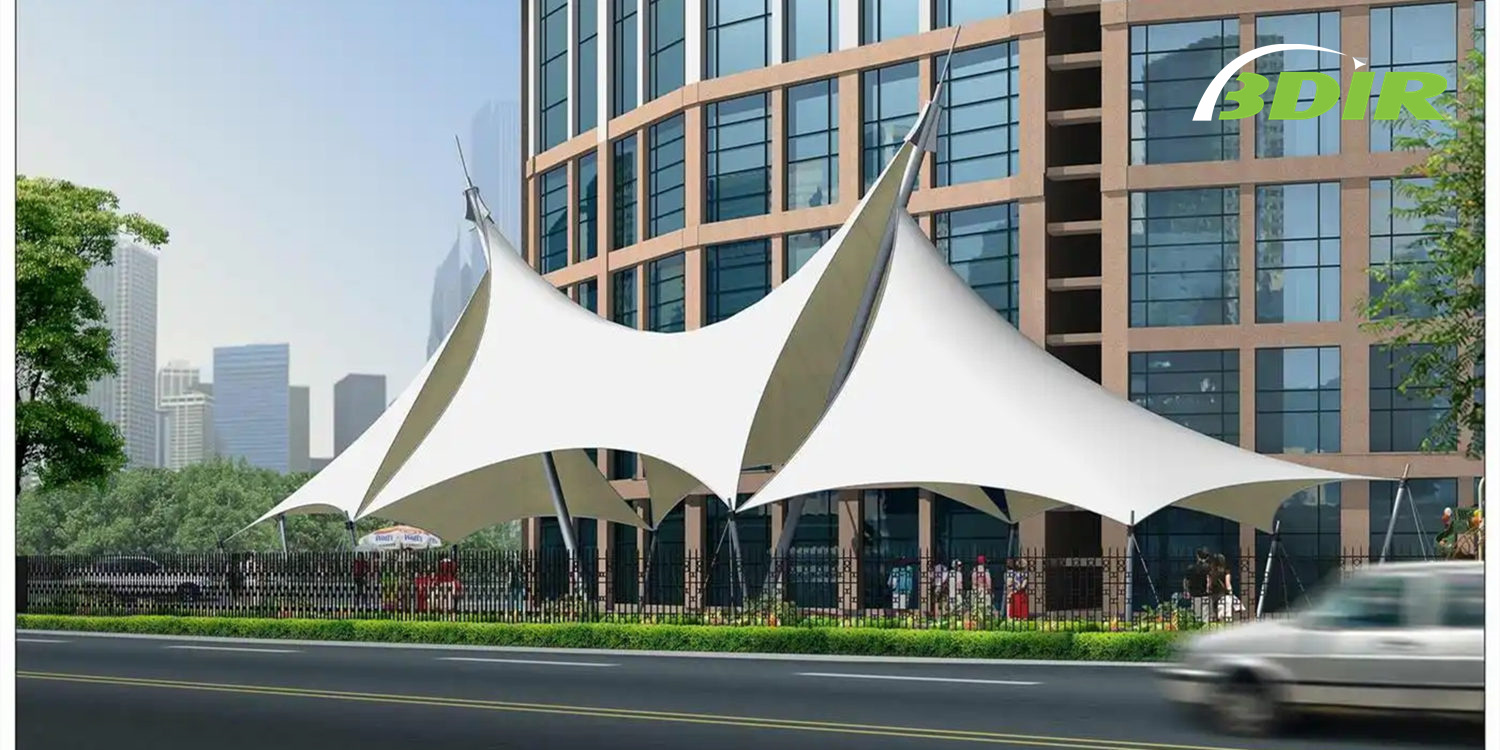What are tensile structures?
Tensile strength refers to the capacity of a material to resist a tension pull and comes along with strength and elasticity altogether. The material made out of tensile is called tensile structure and sometimes more commonly termed as membrane structure, tensioned structure or tensile fabric structures. The use-case of this fabric is when it is stretched by the help of cables and formed into three-dimensional design of roofs, containing a capacity to withstand loads without the help of supporting structures making it a cost effective alternate. Tensile roof structures consist of tensile fabric, coating and top coating. The proceeding paragraphs will uncover attributes, types and dominance of tensile fabric over other materials.
Attributes of fabrics for tensile roof:
- Tensile strength: In architectural point of view, materials are often judged based on their tendency to withhold structures and strengths of the material in general. Tensile roof fabric is renowned for its great tendency of strength.
- Shred strength: Structures are evaluated by checking the breaking point and rupturing time. Tensile structures do not rupture easily and are long-lasting in terms of tearing.
- Cohesive strength: When connecting materials or base coating are bonded with the tensile membranes, the amount of holding them together tells the user regarding its cohesiveness. The membrane structures are extremely cohesive and hold onto the cables.
- Fire-resistance: The resistance is designed to withstand high amounts of heat. Tensioned roofs can resist a relatively high temperatures yet will catch fire if sparks of high intensity are applied. The resistance is due to a flame retardant that is coated onto the surface of roof fabric.
- Elasticity: The unique application is due to its three-dimensional structure and this is due to the elastic property of tensile fabric which is beneficial for the special design of roofs.
Why Tensile roof fabric is fascinating?
Firstly, the installation and costing of tensile roof fabric is relatively is accessible and less respectively Secondly, they are bright and opaque, letting indirect sunlight pass through yet keeping the temperature low. In architectural view, they are simple and aesthetic at the same time while also easy to maintain, light weight and pre installation saves many other resources which eventually cause wastage. Consequently, due to added sets of related advantages, the use of tensile fabric in roofs make it efficient and effective in most constructions.
Types of fabrics in tensile roofs:
Tensile structures use four materials, which offer different properties, depending on the usage of the structure. These are cotton canvas, polyesters, fiberglass and blackout material. The fabrics are used completely rather than meshes, they are further added with laminations or coatings to increase their properties such as durability, strength, elasticity, etc. The table below shows the qualities of each material.
|
Type of fabric |
Attributes |
| Cotton Canvas | Conventional yet widely used for tents mostly, in the form of light canvas or heavy canvas. |
| Polyester | Strong, durable, cost effective and elastic. Most roofs also use this material due to its properties. |
| Fiberglass | Also used for roofs, very strong, relatively elastic and is known for fire retardation, rigidity and energy saving property. |
| Blackout Fabric | This material is used in roofs primarily to protect from light and heat as it does not let sunlight diffuse through it. |


